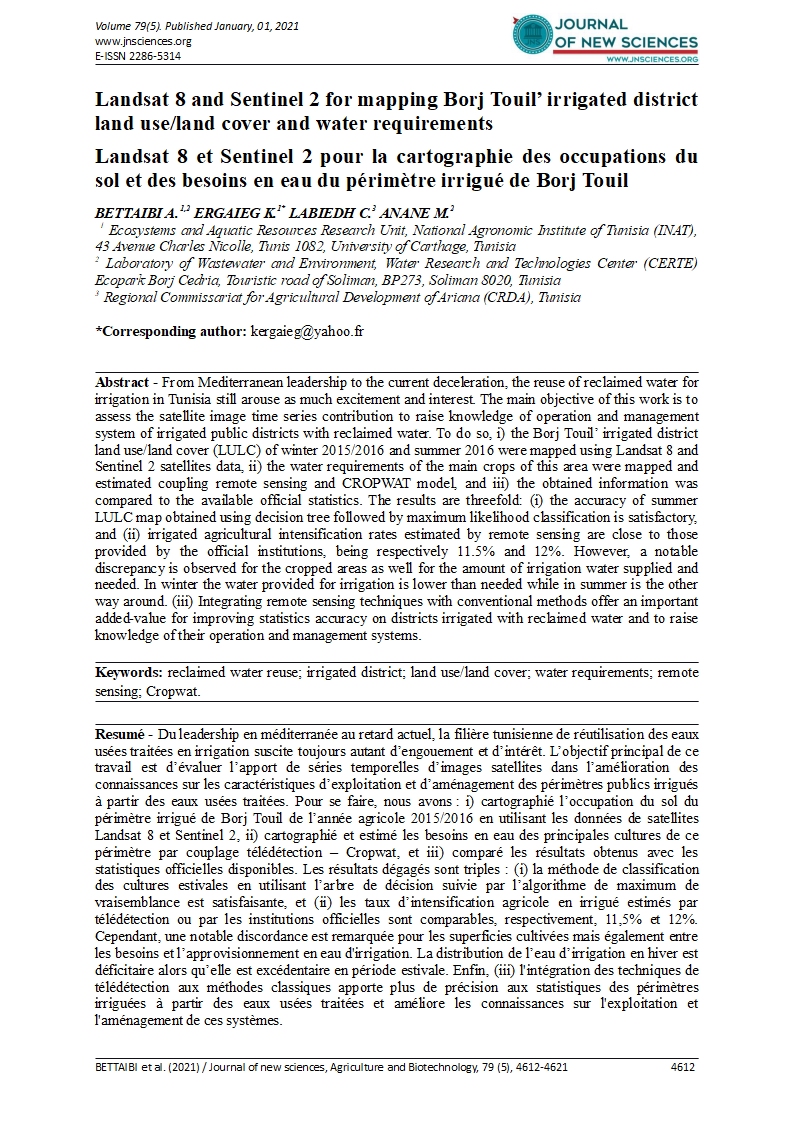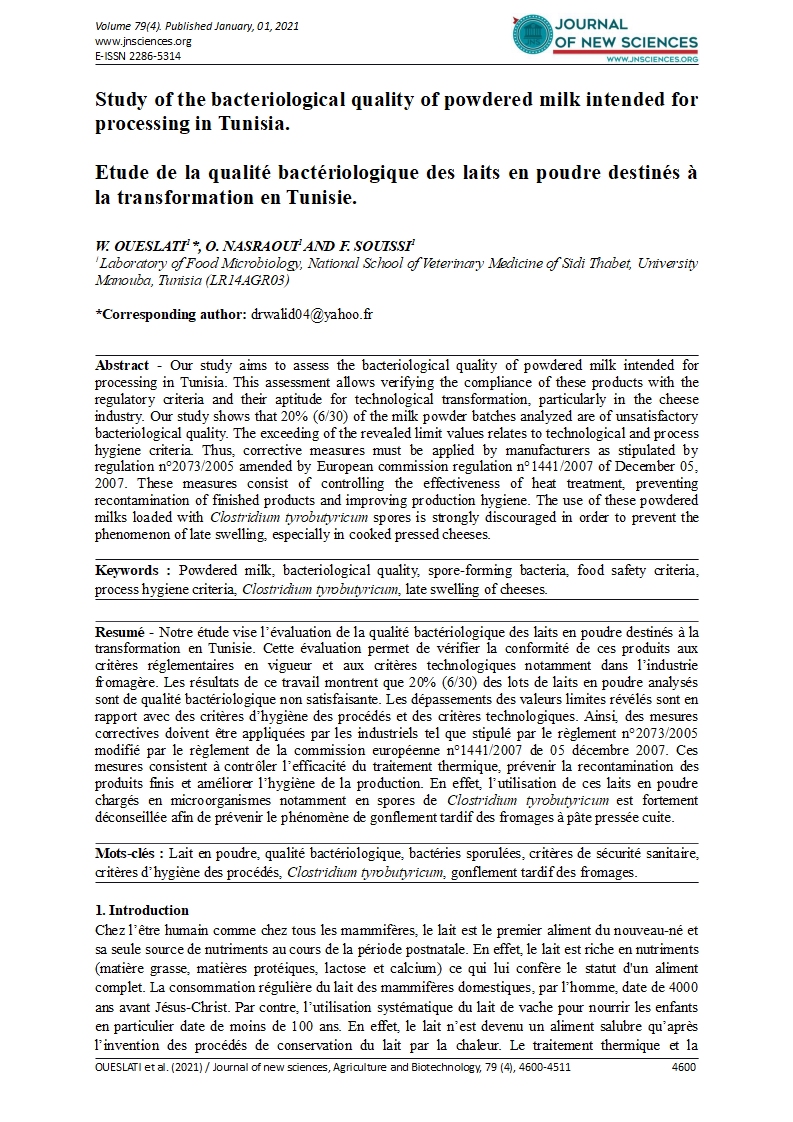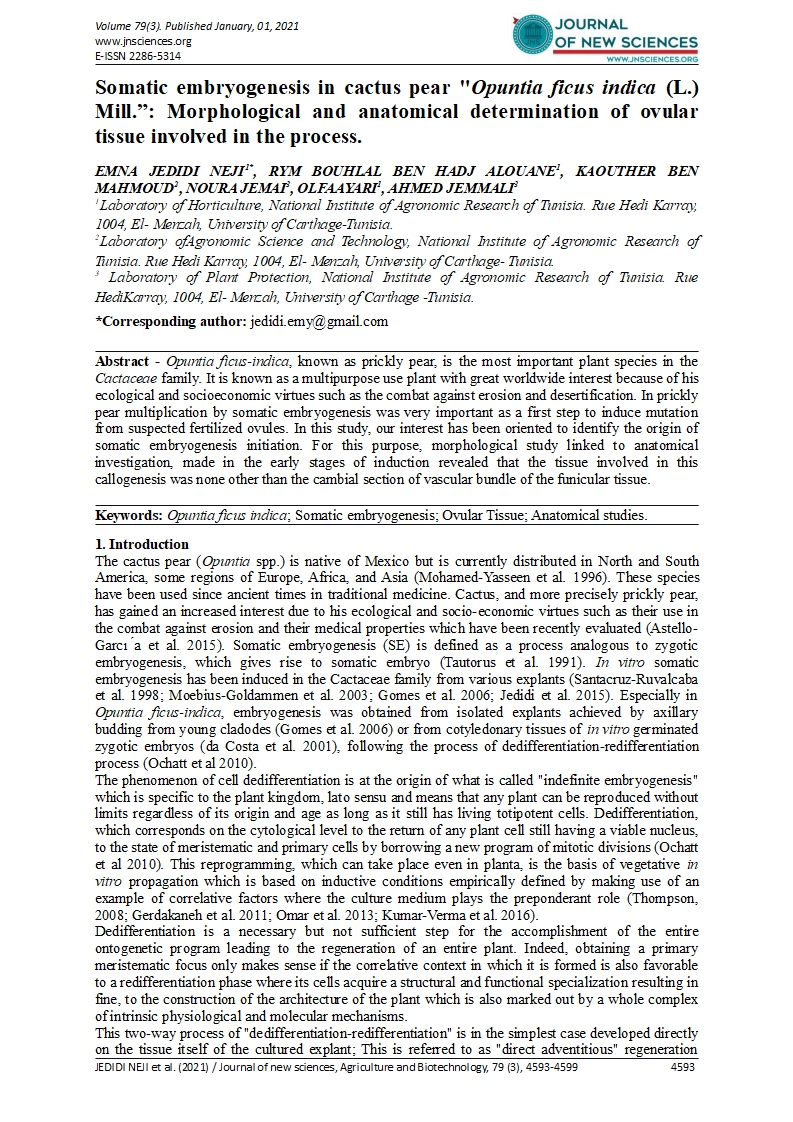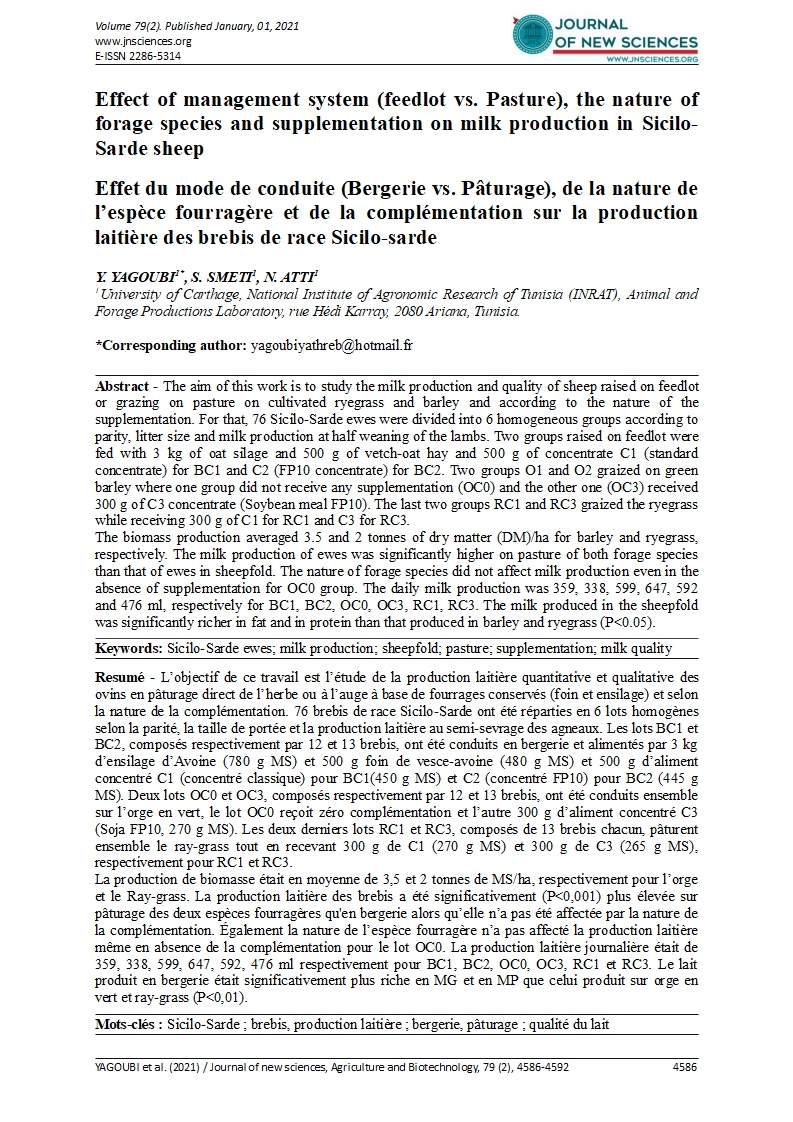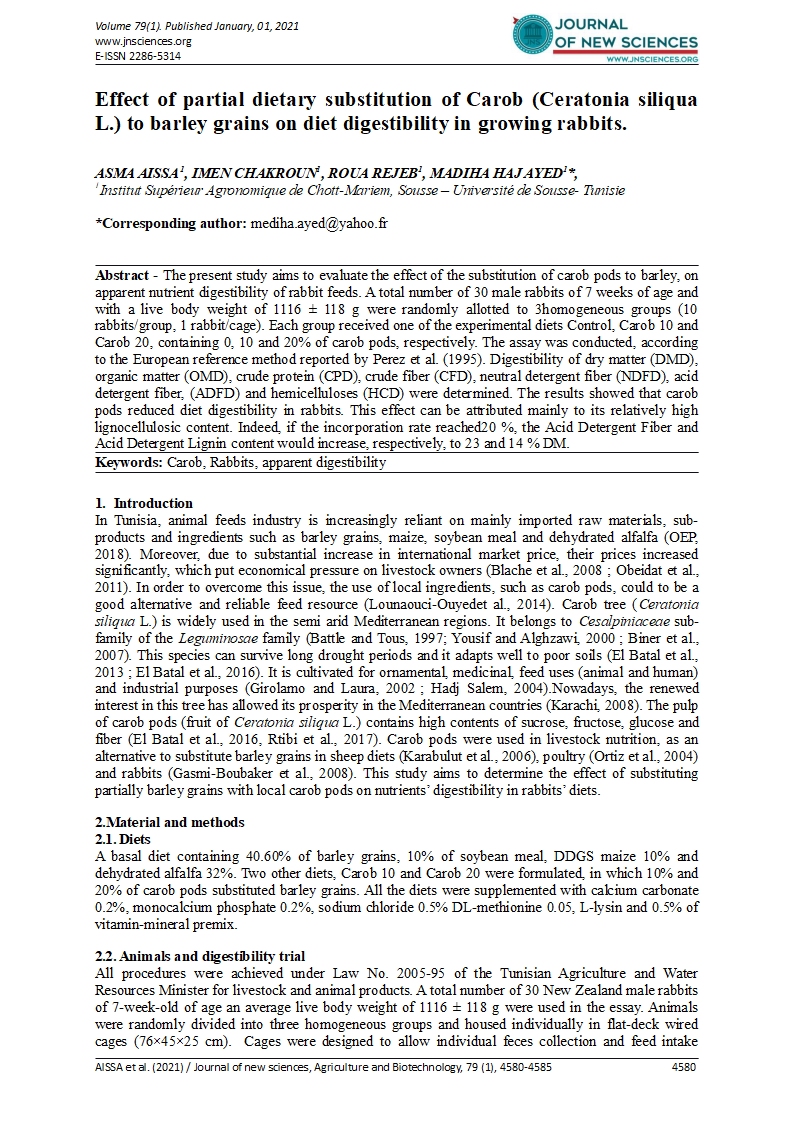- Category: Volume 79
- Hits: 7120
Caractérisation agro-morphologique d’une collection de 16 accessions d’orge (Hordeum vulgare L.) sous climat semi-aride
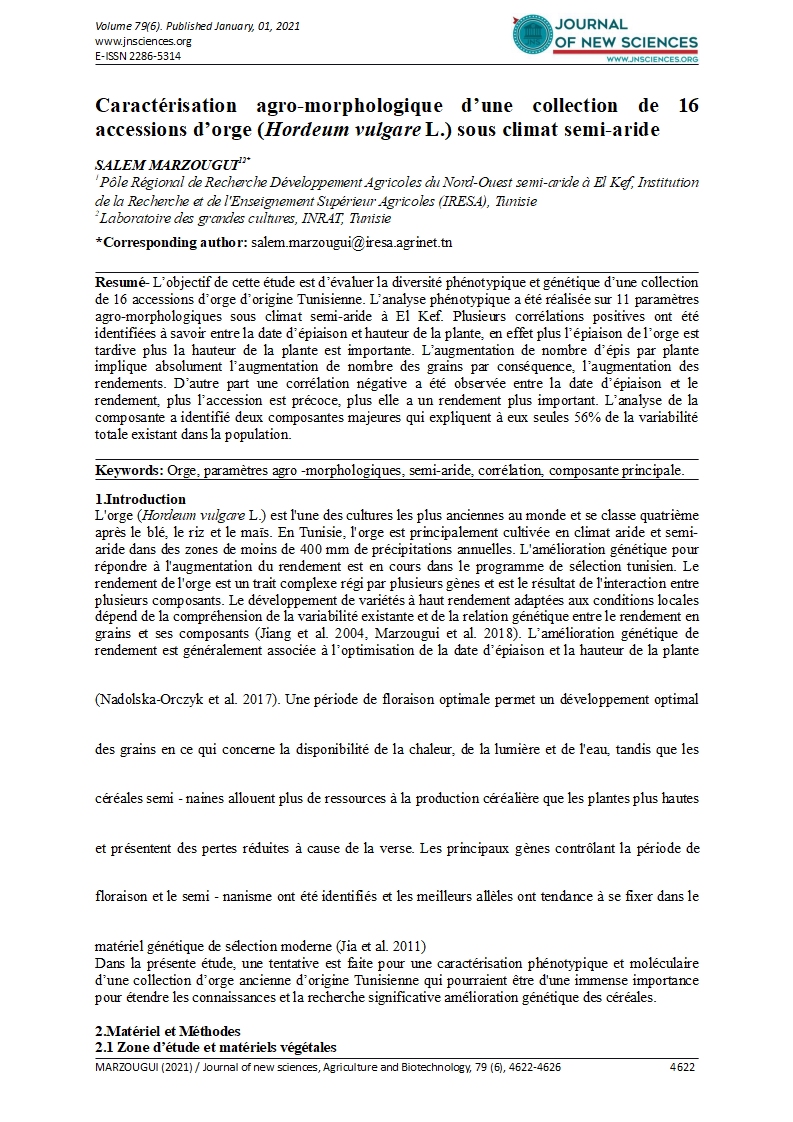
SALEM MARZOUGUI12
1Pôle Régional de Recherche Développement Agricoles du Nord-Ouest semi-aride à El Kef, Institution de la Recherche et de l'Enseignement Supérieur Agricoles (IRESA), Tunisie
2Laboratoire des grandes cultures, INRAT, Tunisie
Resumé- L’objectif de cette étude est d’évaluer la diversité phénotypique et génétique d’une collection de 16 accessions d’orge d’origine Tunisienne. L’analyse phénotypique a été réalisée sur 11 paramètres agro-morphologiques sous climat semi-aride à El Kef. Plusieurs corrélations positives ont été identifiées à savoir entre la date d’épiaison et hauteur de la plante, en effet plus l’épiaison de l’orge est tardive plus la hauteur de la plante est importante. L’augmentation de nombre d’épis par plante implique absolument l’augmentation de nombre des grains par conséquence, l’augmentation des rendements. D’autre part une corrélation négative a été observée entre la date d’épiaison et le rendement, plus l’accession est précoce, plus elle a un rendement plus important. L’analyse de la composante a identifié deux composantes majeures qui expliquent à eux seules 56% de la variabilité totale existant dans la population.
Keywords: Orge, paramètres agro -morphologiques, semi-aride, corrélation, composante principale.

